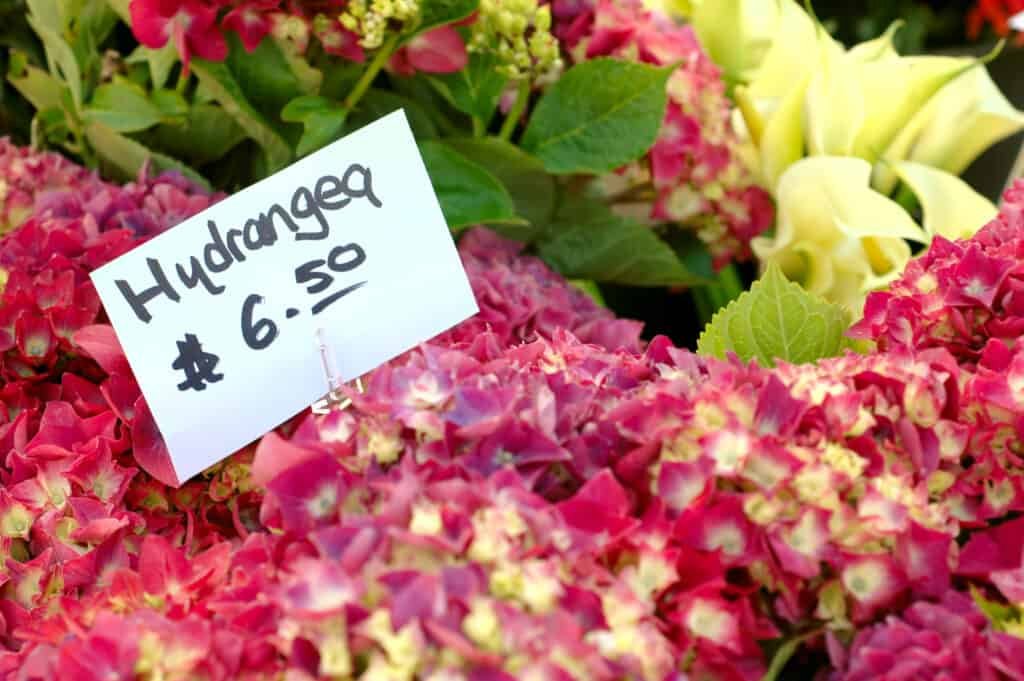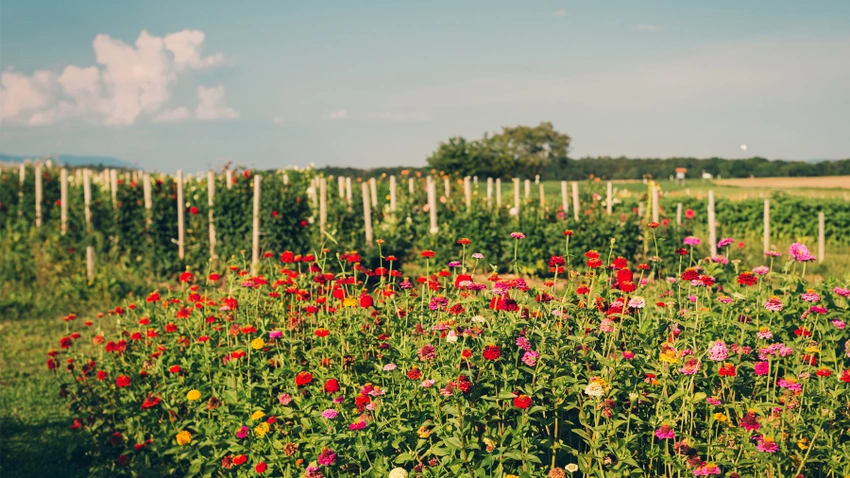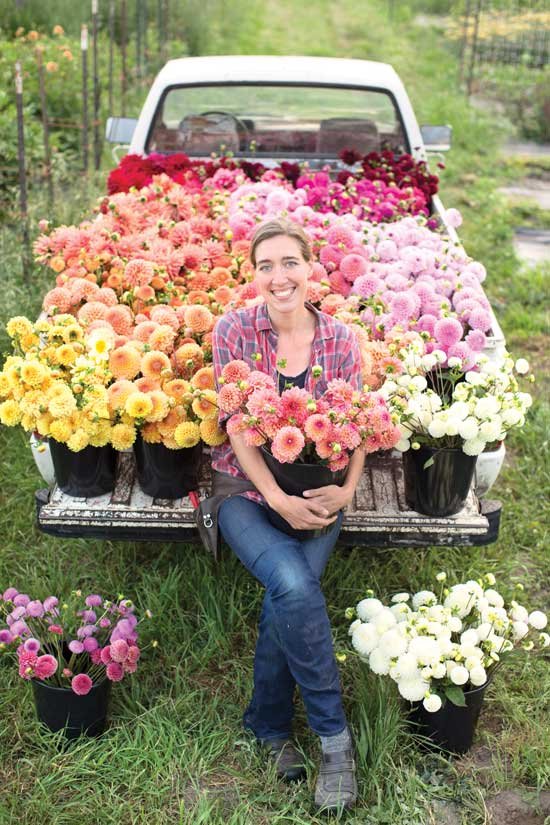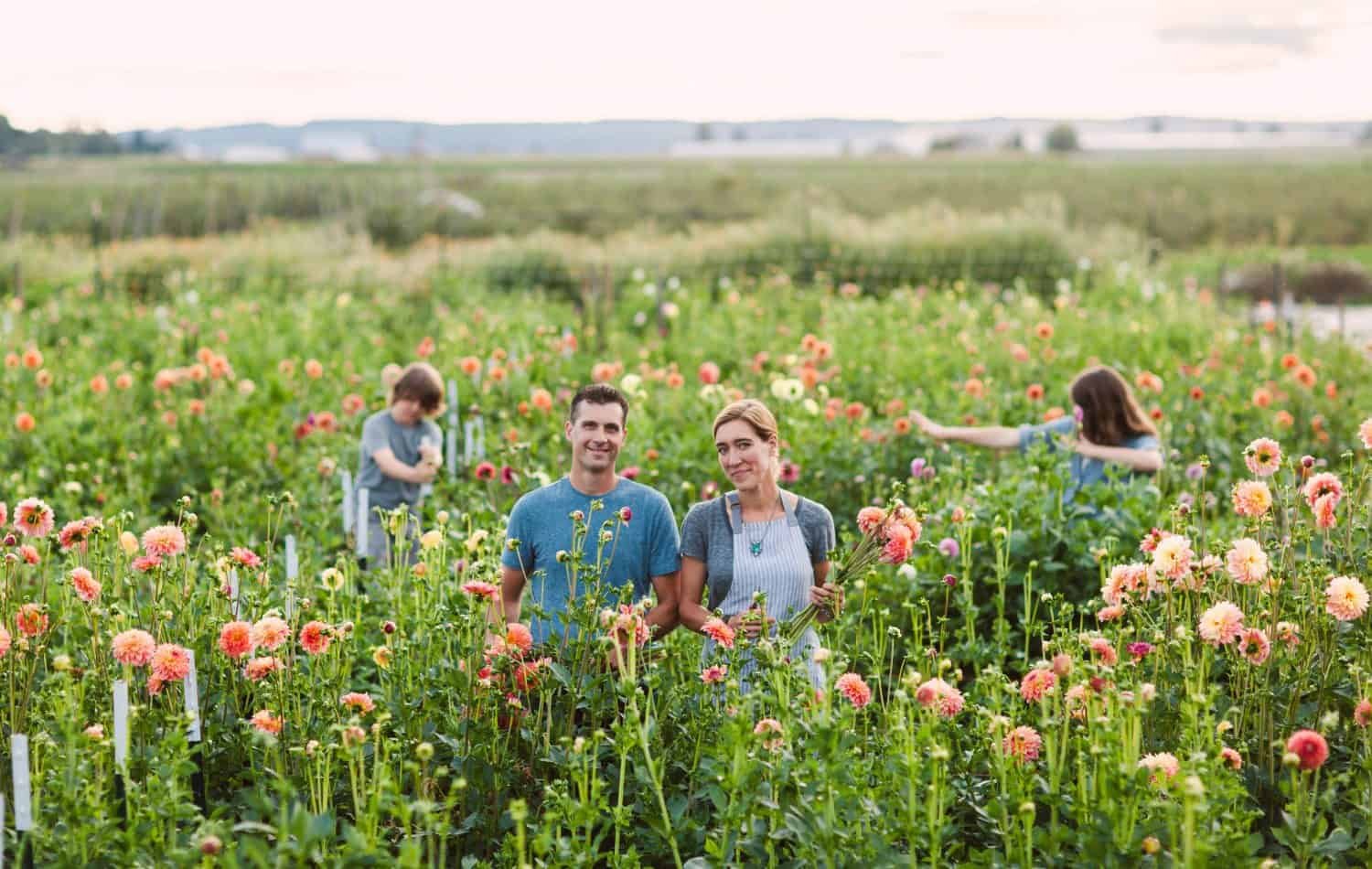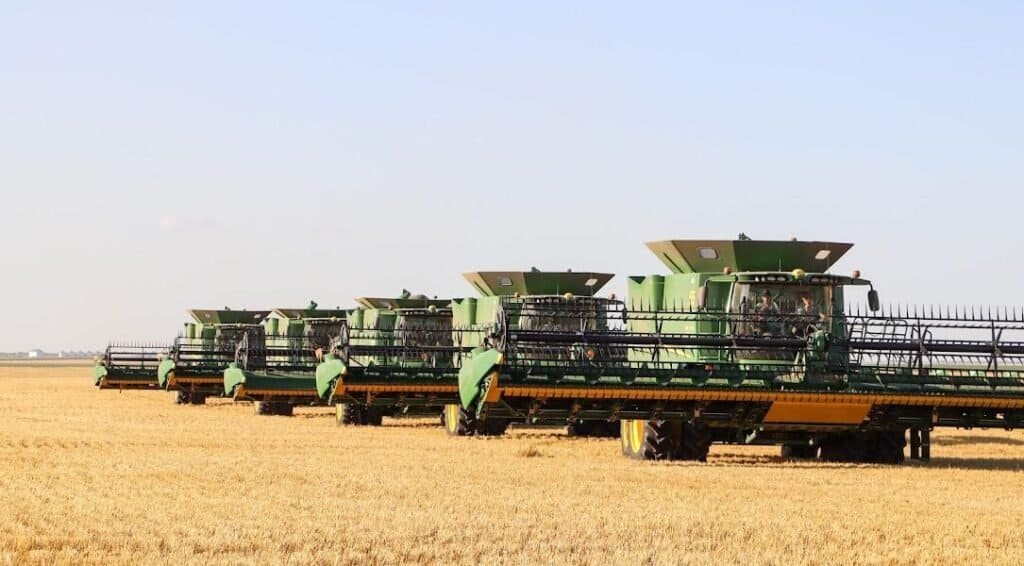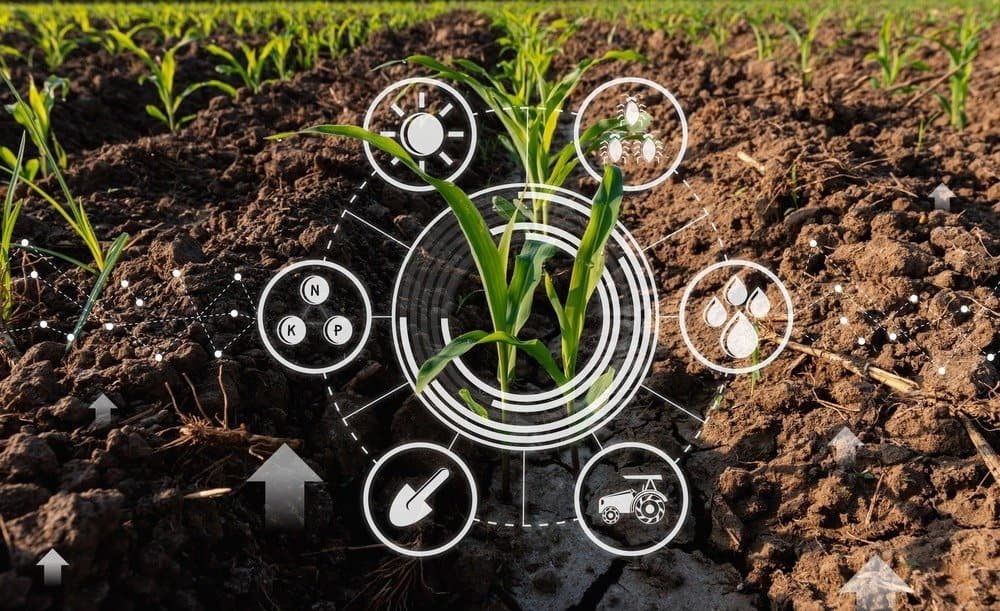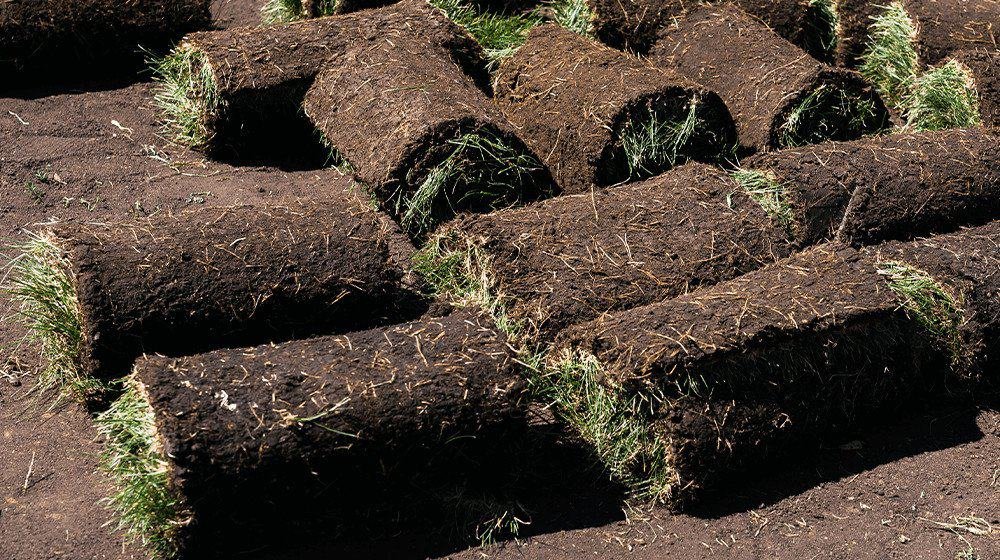How to Start a Cut Flower Farm? Start your cut flower farm by selecting a well-drained site with ample sunlight, choosing a diverse range of flower varieties suitable for your climate, preparing the soil with organic amendments, planting seeds or transplants in rows or beds, implementing proper irrigation and pest management practices, and harvesting flowers at their peak for sale to florists, markets, or direct customers.
The Art of Growing Flowers for Profit: How to Start Your Own Cut Flower Business
The flower industry is a thriving and lucrative business that caters to a wide range of customers, from individuals looking to brighten up their homes to event planners in need of beautiful floral arrangements. Flowers are not only a symbol of beauty and love, but they also have a significant impact on our emotions and well-being. As a result, the demand for flowers is consistently high, making it an attractive industry for small-scale flower farmers.
Market trends in the flower industry show that consumers are increasingly seeking out locally grown and sustainable flowers. This shift in consumer preferences presents an opportunity for small-scale flower farmers to enter the market and meet this demand. By growing flowers sustainably and offering unique varieties, farmers can differentiate themselves from larger commercial operations and attract customers who value quality and environmental responsibility.
Small-scale flower farmers also have the advantage of being able to offer a wider variety of flowers compared to larger commercial operations. While commercial farms often focus on high-volume production of popular flowers like roses and lilies, small-scale farmers can experiment with growing unique and lesser-known varieties. This allows them to cater to niche markets and offer customers a wider selection of flowers to choose from.
Choosing the Right Flowers: Top-Selling Varieties and Their Characteristics
When choosing which flowers to grow, it’s important to consider both market demand and the characteristics of the flowers themselves. Some popular flower varieties that consistently sell well include roses, sunflowers, tulips, lilies, and daisies. These flowers are loved by consumers for their beauty, versatility, and long vase life.
In addition to market demand, it’s important to consider the specific characteristics of each flower variety. Factors such as bloom time, color range, stem length, and fragrance can all impact the marketability of a flower. For example, roses are known for their long vase life and wide range of colors, making them a popular choice for both everyday arrangements and special occasions. On the other hand, sunflowers are loved for their vibrant yellow color and large blooms, which make them a favorite for summer bouquets and outdoor events.
| Flower Type | Varieties | Growing Difficulty | Vase Life | Market Considerations |
|---|---|---|---|---|
| Sunflowers | Many colors and sizes | Easy | Moderate (5-7 days) | Popular, cheerful, good for farmers markets and bouquets |
| Zinnias | Vibrant colors, various forms | Easy | Long (7-14 days) | Heat-tolerant, long blooming season, attractive to pollinators |
| Snapdragons | Tall spikes, many colors | Moderate | Long (7-14 days) | Unique shape, good for vertical interest in arrangements |
| Lisianthus | Elegant blooms, various colors | Moderate to Difficult | Long (10-14+ days) | High-value, popular for weddings and special events |
| Dahlias | Showy blooms, diverse forms and colors | Moderate | Moderate (5-7 days) | Wide appeal, good for late summer and fall sales |
| Peonies | Lush, fragrant blooms | Difficult | Short (5-7 days) | High demand but short season, premium pricing |
| Celosia | Feathery or crested blooms, unique textures | Easy | Long (7-14 days) | Adds interest to bouquets, good for drying |
When selecting flowers to grow, it’s also important to consider the specific needs of your market. For example, if you plan to sell primarily to local florists, you may want to focus on growing flowers that are in high demand for wedding and event arrangements. On the other hand, if you plan to sell directly to consumers at farmers markets or through a CSA (Community Supported Agriculture) program, you may want to focus on growing a wider variety of flowers to cater to different tastes and preferences.
Planning Your Flower Farm: Location, Size, and Infrastructure
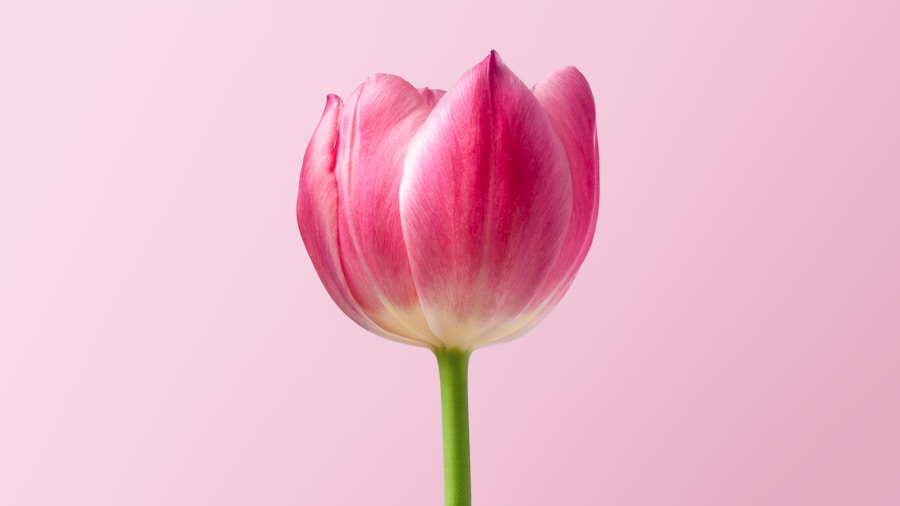
The size of your flower farm will depend on several factors, including your available land, resources, and market demand. Starting small and gradually expanding as your business grows is often a good strategy for small-scale flower farmers. This allows you to gain experience and test different varieties and growing techniques before committing to larger-scale production.
Essential infrastructure for a successful flower farm includes greenhouses or high tunnels for year-round production, irrigation systems for efficient watering, and storage facilities for post-harvest handling. Investing in these infrastructure elements will help ensure that your flowers are grown in optimal conditions and can be stored and transported properly.
Preparing the Soil: Soil Testing, Fertilization, and Irrigation
Proper soil preparation is essential for healthy plant growth and high-quality flowers. Before planting, it’s important to conduct a soil test to determine the nutrient levels and pH of your soil. This will help you determine what amendments, such as compost or organic fertilizers, are needed to create optimal growing conditions for your flowers.
Fertilization and irrigation techniques are also important for maintaining healthy plants. Organic fertilizers, such as compost or well-rotted manure, can be applied before planting or as a top dressing during the growing season. It’s important to follow the recommended application rates to avoid over-fertilization, which can lead to nutrient imbalances and environmental pollution.
Irrigation is another critical aspect of flower farming. Most flowers require consistent moisture to thrive, so it’s important to provide regular watering, especially during dry periods. Drip irrigation systems are often the most efficient method for delivering water directly to the plant roots while minimizing water waste.
Starting from Seeds: Seed Selection, Germination, and Transplanting
Starting from seeds is a cost-effective way to grow a wide variety of flowers. When selecting seeds, it’s important to choose varieties that are well-suited to your climate and growing conditions. Look for seeds that have been tested for germination rates and are free from disease or pests.
Germination is the process by which a seed sprouts and begins to grow into a plant. To ensure successful germination, it’s important to provide the right conditions, including proper temperature, moisture, and light levels. Some seeds may require pre-treatment, such as soaking or scarification, to break their dormancy and promote germination.
Once the seeds have germinated and developed into seedlings, they can be transplanted into the field or greenhouse. It’s important to handle seedlings carefully to avoid damaging their delicate roots. Transplanting should be done when the seedlings have developed a strong root system and are able to withstand the stress of being moved.
Propagating Cuttings: Techniques for Cloning Your Best Plants
Propagating cuttings is another method of plant propagation that allows you to clone your best plants. This technique is especially useful for perennial flowers that may take several years to reach maturity from seed.
To propagate cuttings, select healthy and disease-free plants as your “mother” plants. Take cuttings from the mother plant by cutting a stem just below a leaf node. Remove any lower leaves from the cutting and dip the cut end in rooting hormone to promote root development.
Place the cuttings in a well-draining rooting medium, such as perlite or vermiculite, and provide them with consistent moisture and light levels. After a few weeks, the cuttings should develop roots and can be transplanted into individual pots or directly into the field.
Maintaining healthy mother plants is essential for successful propagation. Regular pruning and fertilization will help keep the plants vigorous and productive. It’s also important to monitor for pests and diseases and take appropriate measures to prevent their spread.
Managing Pests and Diseases: Prevention and Treatment Options
Pests and diseases can have a significant impact on flower production, so it’s important to implement effective pest management strategies. Common pests in flower farming include aphids, thrips, mites, and caterpillars. These pests can cause damage to flowers by feeding on the leaves, stems, or petals.
Prevention is often the best approach to pest management. This includes practices such as crop rotation, maintaining proper sanitation, and using physical barriers like row covers or netting to exclude pests. Regular scouting and monitoring of plants will help identify pest problems early so that appropriate measures can be taken.
If pest populations become too high or if preventive measures are not effective, treatment options may be necessary. Organic insecticides, such as neem oil or insecticidal soap, can be used to control pests without harming beneficial insects or pollinators. It’s important to follow the label instructions and apply treatments at the recommended rates to ensure their effectiveness.
Diseases can also be a challenge in flower farming, especially in humid or wet conditions. Common flower diseases include powdery mildew, botrytis, and root rot. Proper sanitation, such as removing infected plant material and disinfecting tools, can help prevent the spread of diseases. Fungicides may be necessary to control certain diseases, but it’s important to choose products that are labeled for use on flowers and follow the recommended application rates.
Harvesting and Post-Harvest Handling: Timing, Techniques, and Storage
Proper harvesting techniques are crucial for maintaining the quality and longevity of cut flowers. Flowers should be harvested at the right stage of maturity, when they have fully opened but are not yet showing signs of decline. Harvesting too early or too late can result in flowers that do not open fully or wilt prematurely.
Timing is also important for optimal flower quality. Flowers should be harvested early in the morning or late in the evening when temperatures are cooler. This helps reduce water loss and extends the vase life of the flowers.
After harvesting, it’s important to handle the flowers carefully to avoid damage. Remove any leaves or foliage that will be below the water line in the vase, as this can promote bacterial growth and reduce vase life. Cut the stems at an angle to increase water uptake and place the flowers in clean water with a floral preservative.
Proper storage is also important for maintaining flower quality. Flowers should be stored in a cool location away from direct sunlight and drafts. Refrigeration is often used to extend the vase life of cut flowers, but it’s important to avoid storing flowers with fruits or vegetables, as they release ethylene gas which can accelerate flower senescence.
Packaging and Marketing Your Flowers: Branding, Pricing, and Distribution
Packaging plays a crucial role in the presentation and marketing of your flowers. It’s important to invest in high-quality packaging materials that protect the flowers during transportation and enhance their visual appeal. Options for packaging include flower sleeves, boxes, or buckets with water for bulk sales.
Branding is also important for differentiating your flower business from competitors. Develop a unique brand identity that reflects your values and target market. This can include a logo, color scheme, and consistent messaging across all marketing materials.
Pricing strategies for your flowers will depend on factors such as production costs, market demand, and competition. It’s important to consider both the wholesale and retail prices when setting your prices. Wholesale prices are typically lower and are often negotiated with florists or other buyers. Retail prices are higher and should reflect the value and quality of your flowers.
Distribution options for your flowers will depend on your target market and resources. Direct sales to consumers can be done through farmers markets, roadside stands, or a CSA program. Selling to florists or wholesalers is another option, but it may require larger volumes of flowers and consistent quality.
Building a Sustainable Flower Business: Financial Planning and Growth Strategies
Building a sustainable flower business requires careful financial planning and strategic growth strategies. Start by developing a detailed business plan that outlines your goals, target market, production costs, and marketing strategies. This will help you stay focused and make informed decisions as your business grows.
Financial planning is crucial for managing cash flow and ensuring profitability. Consider all costs associated with flower production, including land rental or purchase, infrastructure, seeds or plants, labor, utilities, marketing, and packaging materials. It’s important to accurately estimate these costs and set realistic pricing to ensure that your business is financially viable.
Growth strategies for long-term success can include expanding production capacity, diversifying product offerings, or targeting new markets. However, it’s important to grow at a pace that is manageable and sustainable for your resources. Gradual expansion allows you to learn from your experiences and make adjustments as needed.
Building a sustainable flower business also involves investing in ongoing education and staying up-to-date with industry trends. Attend workshops, conferences, or webinars to learn from experienced flower farmers and industry experts. Joining professional organizations or networks can also provide valuable support and resources.
Tips for Success and Resources for Further Learning
In conclusion, the flower business offers a range of opportunities for small-scale farmers who are passionate about flowers and have a desire to meet the growing demand for locally grown and sustainable flowers. By understanding the market and demand, choosing the right flowers, planning your farm, preparing the soil, starting from seeds or propagating cuttings, managing pests and diseases, harvesting and handling flowers properly, packaging and marketing your flowers effectively, and building a sustainable business through financial planning and growth strategies, you can set yourself up for success in the flower industry.
To further enhance your knowledge and skills in flower farming, there are several resources available. Books such as “The Flower Farmer” by Lynn Byczynski and “Cool Flowers” by Lisa Mason Ziegler provide valuable insights into the business and techniques of flower farming. Online courses and webinars offered by organizations like the Association of Specialty Cut Flower Growers (ASCFG) and Floret Flowers can also provide in-depth training on various aspects of flower farming.
Additionally, joining local or regional flower farming associations or networks can provide opportunities for networking, mentorship, and support. These organizations often host workshops, farm tours, or conferences where you can learn from experienced farmers and connect with other flower enthusiasts.
By combining your passion for flowers with knowledge, hard work, and strategic planning, you can build a successful and sustainable flower business that brings beauty and joy to people’s lives.
